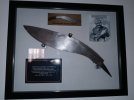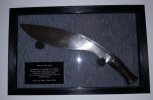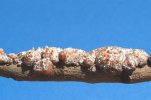- Joined
- Nov 14, 2021
- Messages
- 758
What's the general feeling about unpinned hidden tang fixed blade knives? I prefer full tang knives (pinned), but understand from a design aesthetic why hidden tangs are preferable and even necessary in some cases. But unpinned? As much as I might love a knife with a hidden tang, I won't buy it if there's not a mechanical connection of some type (eg pommel secured to the tang). I'm uneasy about relying solely on epoxy to secure the handle to the blade. What's been your experience?





